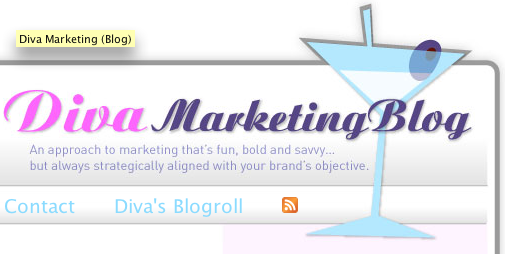 Here’s the archive podcast of the Blog Talk Radio show I did with Toby Bloomberg and Ben Relles (read more). Ben’s story about “I Have a Crush on Obama” is always interesting. And maybe you’ll learn a few things about how brands can harness the power of YouTube. Here’s the Diva Marketing Blog description of the show if you want a quick scan.
Here’s the archive podcast of the Blog Talk Radio show I did with Toby Bloomberg and Ben Relles (read more). Ben’s story about “I Have a Crush on Obama” is always interesting. And maybe you’ll learn a few things about how brands can harness the power of YouTube. Here’s the Diva Marketing Blog description of the show if you want a quick scan.
Category Archives: Making Money
The Marketeter’s Cheat Sheet to Viral Video
 You’re running a brand that is trying to “dip your toe” into social media and online video, and you’re facing some important questions:
You’re running a brand that is trying to “dip your toe” into social media and online video, and you’re facing some important questions:
- Is my brand right for this?
- How can I experiment without ending up as a “case study” failure?
- Can I convince my company that we should do this?
- What are my options for developing compelling content and distributing it widely?
Here’s a quick guide that encompasses a lot of topics we’ve covered on this blog. It’s the “least a marketer or agency needs to know” about online video, and will give you a roadmap for a good program.
- Step 1: Determine if your brand is right for online video. Is your brand compelling and simple, or complex and direct-response oriented? If you’re a consumer-product goods (CPG), it’s a no-brainer. If you’re in a complex, crowded, regulated and boring industry, it’s going to be more difficult.
- Step 2: Keep it quiet. The more senior management and attorneys you bring into a pilot, the more internal battling you’ll do before experimenting. Get some “air cover” from an executive sponsor, and avoid excessive internal scrutiny.
- Step 3: Let go. Your marketing message is critical to you, but if your content is driven by an advertising objective it’s at risk of being a flop. If you want to go viral, you’ve got to entertain first and promote subtly. There are countless case studies on this, and it’s an inarguable fact. If you buy media, your ads can be boring. But if you expect people to share your video, it better be entertaining, provocative, sexy, funny, outrageous or at least interesting.
- Step 4: Develop a creative brief. Don’t make it too narrow, but give it some focus. If you ask people to make a funny video that includes your brand, you’ll get a lot of stuff that may or may not support your objective. But if you require creators to insert a series of “unique selling propositions” then you’ll end up with ads instead of entertaining videos. With my smaller clients, I develop the brief. Larger clients often already have one, and simply need ideas or video content.
- Step 5: Engage creators. You have four options here.
- Option one, you can hire your agency to create video content. This gives you control, but most agencies (advertising, online, and public relations) lack experience in social media and online video in particular. I’ve found this to be extremely expensive, and often the agencies lack the expertise to make the videos “not suck” and get the videos widely viewed and “seeded” in the right places.
- Option two, you can hire individual amateurs. This gives you access to people that know the medium and have established audiences. Some smaller brands (and larger ones) contract directly with people like me, InvisibleEngine, Rhett & Link and Barely Political (just a few creators that are interested in building entertaining, promotional content). This keeps things safer, but requires some oversight since you’ll need to interact individually with these companies or people.
- Option three, you can run a big, public contest. These are still quite common, but rather expensive. You’ll spend a lot on media to promote the contest (money I’d prefer to see brands use to promote the brand itself). You’ll also get a lot of lame content, but hopefully a few winners.
- Finally, you can contract with a third party that can represent a variety of proven creators. For example, a few large brands have contracted with Xlntads to help reach a collection of experienced amateur creators (note: I consult with Xlntads, and run its creative ad board). There are probably similar brand/creator models that offer this service, but I’m less familiar with them. I see this as an evolving industry that can either contract directly to brands or via agencies. For instance, Daily Motion has brokered between certain major advertisers in France, and works from the agency’s creative brief to identify, engage, pay and leverage the presence of appropriate creators that produce content on the site.
- Step 6: Get the videos seen. If you want to buy media, you can run your videos as advertisements on a variety of sites. The second and third tier video sites are especially receptive to giving prominence to promotional content in fairly inexpensive media buys. If your content is good enough, you can hope it will travel “viral” style: people will share it with friends, post it on their blogs, feature it on their websites. There are three magic tricks that make this work:
- First, your content has to be good.
- Second, it really helps to leverage the distribution and audience of known creators. If an amateur has a popular blog or YouTube channel, this gives you a much better chance of wide distribution.
- Thirdly, you can “seed” it yourself or have the creators, third parties or agencies do it. This “seeding” involves reaching out to appropriate online properties, channels, discussions, forums and blogs. If it’s good content and you reach out to people politely your chances increase. I’ve seen bad videos that get lots of attention, and good videos that die. So this third step is non trivial and often overlooked.
- Step 7: Evaluate. Did the videos get lots of views and positive feedback? What did the comments say? Did people take a measurable action after watching the video? Keep your expectations in check: few marketing videos break into the millions of views, and very few of those viewers will take an immediate action (visiting your site, and making a purchase). These videos will, however, help your rankings via Google and other search engines. So maybe the next time a prospect is searching for your brand on Google, they’ll find your brand-friendly videos instead of a competitor’s content or disgruntled customer. This is a powerful and often overlooked outcome of a good video pilot.
- Step 8: Scale as Appropriate. Most online-video marketing projects are simple experiments to help brands learn and “test the waters,” and few have scaled radically. However some brands have been so excited about results with online video that they return annually with programs that are hard to miss.
With a few exceptions, I haven’t yet seen many online-video pilots driving significant, immediate sales for a brand. But I have seen online-video initiatives that have increased the awareness of the brand, and changed the attributes and preference of target consumers (as measured by awareness trackers). Most of my clients have enjoyed an online presence they wouldn’t have gotten on their own and found it a good investment. A few have confided that more people watched my stupid video than visited their big, bloated agency-developed website (which contained a variety of expensive videos they produced). It’s much easier to reach people on the highway of YouTube than to hope they’ll stop at the little rest stop you create (which is usually a huge expense and a “throw away” at the end of the project).
Other suggestions? Bring ’em on. This is a blog, for crying out loud.
YouTube as Marketing Channel: Live With Bloomberg
Marketing Consultant Toby Bloomberg (Marketing Diva Blog) is hosting a radio/podcast show on the topic of YouTube as a marketing channel. It’s live tomorrow night (Tuesday, 6:30 PM EST). I’ll be a guest along with Ben Relles, creator of the wildly viral “I Got a Crush on Obama” and Barely Political.
Here are the details:
- What: YouTube/social networking video sites: Play Toy or Credible Marketing Strategy? Kevin Nalts and Ben Relles join Toby to explore if video networking sites like YouTube can go beyond “cool” to a credible marketing strategy. And by the way, how do you get a video viewed by thousands?
When: Tuesday, 2/19/2008 6:30 PM ESTWhere: (718) 508-9924 (or visit Toby’s channel on BlogTalkRadio, but note this link activates the last show with a preroll audio ad).
Bubble Bursting for Video Creators Hoping to Monetize Content?
 Online-video creators are sobering up after an intoxicated 2007, as they realize that the “road to riches” via online video is fraught with challenges. Business Week proclaimed “amateur video hour” as over in December. Crackle and other sites migrated from UGC (user-generated content) some time ago. And here are some quite recent data points that, alone, aren’t really newsworthy but tell a sad story together:
Online-video creators are sobering up after an intoxicated 2007, as they realize that the “road to riches” via online video is fraught with challenges. Business Week proclaimed “amateur video hour” as over in December. Crackle and other sites migrated from UGC (user-generated content) some time ago. And here are some quite recent data points that, alone, aren’t really newsworthy but tell a sad story together:
- Metacafe set a higher bar for revenue-sharing “Producer Rewards” program, much to the dismay of some creators who saw their popular videos drop from the program (see Metacafe forum).
- Revver, the pioneer of online-video revenue sharing, was sold for pennies.
- The initial participants of YouTube’s Partnership program (which shares revenue with creators) hit their one-year anniversary in March. Although YouTube and its creators are not permitted to disclose the specifics, I do have sources that reveal early participants received fixed fees that (in some cases) allowed them to quit their day jobs. The rest of us joined when YouTube had adjusted the program so that we’re paid a percentage of ad revenue, and I can’t disclose specifics. Compared to nothing, it’s welcomed cash. But it’s far from enough to live on.
For sure, some creators are doing well with sponsored gigs, DVD sales and rare television contracts. I’ve managed to augment my income by creating sponsored videos, and have done fairly well in the past 6 months. But it’s certainly not enough to quit the day job, and I’m not patient or risky enough to hold my breath for a lucrative television contract.
Solution 1: Pay for Content?
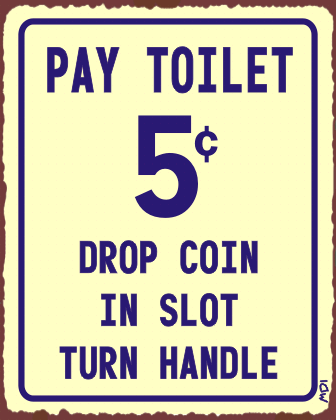 With few exceptions, viewers don’t yet pay for amateur content. This is especially true for early adopters of online-video, who have enjoyed free video, including amateur stuff, copyrighted material via YouTube, and free movies & music via P2P sharing. As the mainstream audience moves in, the market for paid content will increase, but mostly for professionally produced and well marketed video. Perhaps we’ll see a third-party aggregate some second-tier amateur content and develop a paid subscription model (especially if that content can be fed into PC, mobile and television). However an individual amateur would inarguably lose the vast majority of their audience if they required the audience to even move to an alternative channel (their own ad-supported site) or charged for it. Even Howard Stern lost most of his audience when he moved to Syrius. So it’s no surprise that I’ve sold only four copies of the “Best of Nalts” DVD.
With few exceptions, viewers don’t yet pay for amateur content. This is especially true for early adopters of online-video, who have enjoyed free video, including amateur stuff, copyrighted material via YouTube, and free movies & music via P2P sharing. As the mainstream audience moves in, the market for paid content will increase, but mostly for professionally produced and well marketed video. Perhaps we’ll see a third-party aggregate some second-tier amateur content and develop a paid subscription model (especially if that content can be fed into PC, mobile and television). However an individual amateur would inarguably lose the vast majority of their audience if they required the audience to even move to an alternative channel (their own ad-supported site) or charged for it. Even Howard Stern lost most of his audience when he moved to Syrius. So it’s no surprise that I’ve sold only four copies of the “Best of Nalts” DVD.
Solution 2: Ad-Supported Content
 As much hype as we’ve seen about consumers avoiding ads, this is the most viable, sustainable model. Simply put, good content won’t sustain for free, and amateur content hasn’t a prayer unless it’s supported by ads. Currently, this model is rate-limited by two sad realities. First, advertisers have been slow to buy ads around amateur content — even YouTube doesn’t appear to be selling its full inventory of InVid (overlay) ads. Secondly, there’s not yet broad enough distribution of this content.
As much hype as we’ve seen about consumers avoiding ads, this is the most viable, sustainable model. Simply put, good content won’t sustain for free, and amateur content hasn’t a prayer unless it’s supported by ads. Currently, this model is rate-limited by two sad realities. First, advertisers have been slow to buy ads around amateur content — even YouTube doesn’t appear to be selling its full inventory of InVid (overlay) ads. Secondly, there’s not yet broad enough distribution of this content.
I’ll argue that good video content and consumer demand exists, but people there aren’t yet enough viewers of amateur content to warrant significant dollars from advertisers. And we’re in dire need of an easy vehicle to view UCG via our mobile and television boxes, which will increase both viewer demand and advertising inventory (my next post will explore web/TV devices, which I believe are the lynch pin here).
Diet Dr. Pepper Cherry Chocolate Wins Our “Viral Video Marketer of the Year Award”
 Well actually WillVideoForFood doesn’t have a “viral video marketers of the year award,” and even if it did, we’d wait until December to give it out. Still, this “Cherry Chocolate Rain” video sponsored by Diet Dr. Pepper’s Cherry Chocolate is a near perfect case study on smart online-video marketing.
Well actually WillVideoForFood doesn’t have a “viral video marketers of the year award,” and even if it did, we’d wait until December to give it out. Still, this “Cherry Chocolate Rain” video sponsored by Diet Dr. Pepper’s Cherry Chocolate is a near perfect case study on smart online-video marketing.
First, it leverages the viral fame of TayZonday, who sprung to viral fame with his deep voiced “Chocolate Rain” (more than 14 million views on YouTube).
Proof of the viral-video campaign’s strength is in the (chocolate) pudding…
- TayZonday cost relatively little relative to typical CPG ads (but probably wrote the biggest check the unsigned 25-year-old musician will ever cash).
- The brand identified a producer/director to help the singer, but gave creative freedom away… and kept the branding to a bare minimum. Had the branding been more overt, the pass-along would have dropped precipitously.
- The spot is funny, self-deprecating, transparent, tantalizing, and engaging. It includes music, pretty women, a bedazzled amateur with talent, and chocolate being tossed on squirrels.
- This same video posted by Dr. Pepper (instead of posted on TayZonday’s popular YouTube channel) would have been viewed maybe several thousand times at best, but it’s already up to nearly 3 million views since its November launch. By comparison, my most popular video was 4.5 million views and not sponsored. That view count is quite rare for a sponsored video — if each view is worth a nickel or dime to the brand, the program has probably paid for itself already.

- More importantly, it’s been featured on television which is equally rare for an advertisement. This alone probably justified the moderate cost of the program, and in fact may be worth more than the viral view.
- Check out the Google search results for “cherry chocolate dr pepper.” The video outranks the Dr. Pepper website, where a visitor will fumble through a bloated flash interface before finding the Diet Dr. Pepper Cherry Chocolate page and not even find the video (an intentional move). So the brand has a better experience now for curious consumers.
- While a few criticized TayZonday for “selling out,” most of us were happy to see an amateur capitalize on his talent. It’s a bit long for my taste, but it made me smile and made me aware of a brand I didn’t know existed until now (despite the fact that Diet Dr. Pepper is my second favorite drink after Diet Mountain Dew). Say, that reminds me. The Mountain Dew site is pretty cool, but they sure could use a viral video about farts.
Finally The Queen Can Make Spare Change from YouTube
YouTube announced on January 30 (see YouTube blog) that UK ‘tubers can now join the Partners program and share in advertising revenue. Why do journalists often frown at this? Here’s a Texas journalist who is saddened by the idea. When I was interviewed by Fox after the program started in the US, the interviewers had the same opinion.
If YouTube began commercializing homepage features (getting paid) that would be the equivalent to Time Magazine getting paid to run a story about a business. But sharing advertising revenue with content creators is the very thing television is built around. Know any good TV producers making content for networks gratis? Infomercials maybe?
Paranthetically, I’m in London to personally congratulate local YouTubers. Well, actually I’m here for business and it’s coincidenal. And my wife and children are back in PA under the careful guard of former Green Beret Pipistrello.
Join us if you like!
Monday (Feb 4) 6:00 pm:
(Smaller gathering- it’s a bar so I think you need to be 18)
The Shaston Arms in Soho
(Closest Underground stop is Oxford Circus)
Wednesday (Feb 6) 6:00 pm:
(Larger gathering- bring family and friends)
The Royal Festival Hall
Directions
What Should a Viral Video Cost a Marketer? (Killer Post)
“The price of a thing is the worth it will bring.”
I love that quote, but the reality is that “viral” video pricing has been less about worth and more about cost plus.
If anyone should know the “fair market price” of a viral video it should be I — or me (depending on which one is grammatically correct, and I really don’t want to know, because I don’t plan on framing a sentence that way again).
After all, I interact daily with brand marketers, big and digital agencies, and video creators. Yet prices range irrationally, and the market is in desperate need of guidance. This post is a long one because this is a complex and important issue to brands and creators. I really should clean this up, and adapt this for one of the advertising and marketing trade magazines.
Nalts Discloses Fees
Let me disclose my own fee structure and hope others will do the same. I initially was happy with $1,000 per video (for Mentos and some of my early work), but soon discovered my hourly rate computed to less than minimal wage. And I was juggling more work than I could handle with a day job. I also didn’t want to junk my YouTube channel with excessive sponsored videos, which alienating my subscribers (especially since many resent YouTube’s InVid ads, which produce far less income for me than sponsored videos).
Now I’m pricing between $3,000 and $10,000, but there are a few reasons I can price this way:
- I have a decent track record, and fortunately more demand than time.
- I have a steady audience on YouTube so most of my videos will get at least 20-40,000 views.
- I have a marketing background, and provide strategy and a creative brief before diving into the video.
- I try to produce several videos so a brand can amortize the cost (and generally I get some efficiencies out of a series).
- I have gobs of debt (hey, just keeping it real here).
How Marketers & Creators Find Each Other
There are, of course, plenty of video creators who can perhaps do better videos for less money. I have developed a network of specialists that can, for example, do a great score, logo or animation very inexpensively. But I haven’t yet discovered a good “business exchange” site where advertisers and creators can find each other (viral video could use its own eBay, Craig’s List or Match.com). I’ve thought about starting one, but it is labor intensive and not something that automates well without significant volume. And I don’t feel like being the “viral video” middleman or talent scout.
Xlntads (with whom I consult occasionally) is approaching that model because hundreds of creators have registered and sometimes partner via the site (a director and a musician team up for an ad). A brand can generate a variety of videos via Xlntads without hunting down and dealing with individual creators (not to mention multiple contract negotiations). I like that as a marketer, and as a creator I’m happy to work for a smaller fee if I can avoid some of the incredibly time-consuming and frustrating “business development and qualifying” hassle.
Going from Prospect eMail to Payment
My visibility means most of my clients find me, so I’m fortunately not cold calling (yuck). But there’s a huge cost associated with qualifying something and having multiple phone calls and documents, and some of these go nowhere. I probably ignore valid opportunities because I miss an e-mail, or it reminds me of a previous discussion in which I invested time and energy understanding the brand, building a creative brief, proposing video concepts… then the agency or brand inexplicably “went dark.”
More importantly, many video creators have no interest or experience in selling their work, and simply want to create something for a modest profit. Historically, I don’t charge until I make a video, and yet much of my value occurs earlier and I’ve been giving that away naively.
Project or Retainer Video Consulting
As of this post, I’m moving to a flat-fee model where I charge $250 an hour (or a discounted day rate) to: understand the brand’s goals, conduct some informal research of their “space” in online video, build or adapt a creative brief, and present a series of video concepts. This initial fee will help me qualify clients and provide better service initially (as opposed to scrambling together a few weak concepts 10 minutes before a conference call). Then I’ll scope and price videos separately. This seems fair, since much of my value is in the initial phase, and the fee justifies my time and makes me a partner instead of a video production guy desperately pitching a few Nalts videos in hopes that I haven’t wasted my time. If I’m not right for the client’s production (or if I’m swamped) I can refer it to other creators.
As a marketer, I’d maybe prefer to pay upon completed video, but I am accustomed to paying for my agency’s time by the hour (and usually at a rate that far exceeds $250 when you burden it with overhead).
In 2008 (recession or not) companies and agencies will need marketing/video expertise, but can’t justify a full-time employee until this space matures. Do you remember what smart agencies and clients did when paid-search was emerging as a discipline? Rather than hire a firm with overhead or pay a full-time employee, they tapped specialists who were compensated for their objectivity, expertise and time. My career goal is to move from corporate marketing to online-video consulting retainers for a few companies and/or agencies. But don’t tell my boss yet. 🙂
Various Creators. Various Fees.
There are a number of video creators that do work for hire.
- Some are simple and some are complex teams with expensive budgets.
- Many are brilliantly creative but couldn’t market their way out of a paper bag. Others are sound marketing strategists that suggest creative concepts that make you cringe inside (I need to start documenting some of these because they’re so unfunny they’re funny again).
- I’ve known brands that have spent $250,000 on a series of 4 short viral videos (not kidding), and I’ve known brands that have done almost the same thing on a shoestring $5K budget.
As a marketer, I tell people to keep their costs down since there’s no guarantee the video will pop. As a creator, of course, I want to profit from my work and want the same for other amateurs.
If you make online videos, please feel free to pimp yourself below- as long as you provide some information about your pricing.
“Fixed” versus “Variable” Payments
Should a marketer pay for a video, or pay the creator based on its viralicity? I have a strong opinion here, but I need to first explain why I cringe at “per view” payments. A view isn’t a view. Views can be manipulated in various ways – I don’t know how the “viewer robots” work (and don’t really care) but I assume they replicate a view by refreshing a video in intervals using various IP addresses. Most sites are developing safeguards against this, and counting only true views as those that last more than, say, 30 seconds. I’ve notice my view count darts to 200 and then stops for a while before it reflects that actual views. Presumably someone is validating the view count before it’s reflected accurately.
- Any video site can fudge the view counter and it would be hard for a marketer or creator to know otherwise (candidly I suspect some of the second-tier sites are manipulating view counts to make the site look popular for visitors and advertisers).
- “Auto roll” is another way to manipulate views. My YouTube profile page has a feature where the video plays automatically on the unwitting viewer, which gives me the ability to get any video thousands of views pretty quickly.
- Even a real view isn’t always the same as a real view. Why do we pay different CPMs to media properties? Because some are worth more than others. If I do a video highlighting a U.S. hotel chain, it’s going to be worth much more to my sponsor to have that viewed on a travel blog or golfer website than on Break.com by a 14-year-old kid in Russia. It will be years before we can target views by demographics, so we assume some degree of waste.
As a video creator I’d prefer to be paid for my time and creativity, and not be gambling on the video’s popularity to find out if I’ve made $4 an hour or $7. As a marketer I don’t want to inadvertently reward the creator to junk and manipulate views. And even if I “capped” the view incentive, it’s a pain on my budget system to hold a reserve. Try explaining to the folks in finance why you’ve set aside $20,000 in case your video gets popular.
Pay for Seeding
Finally, there are two distinct costs associated with videos. First is the “creative” cost, like producing an advertisement. Second is the “promotion” cost of getting it viewed. While that can involve direct media fees (paying a site to feature a video), this is typically a retainer-based service that involves a person or agency seeding the video and reporting on views. Generally this is a temporary retainer since most of the views will take place in the first 30 days (I’m over simplifying this, but I wouldn’t hire an agency to report on my viral video for six months if each bi-weekly report was changing by .2%). After a few months, you move on. There are a few creators that have mastered this art, and a few agencies that are claiming it but have no idea about how to do it well.
This, like public relations, is a difficult thing to sell. But rest assured that “earned” media (locating a relevant blogger and asking them to post your video) is more targeted and effective than paying to flight crappy preroll ads. My recent Mac Spoof went well past 200K, and we’ll never know that’s attributed to the timliness and humor of the video itself, or the few e-mails I sent to Mac blogs (which took about 5 minutes).
There’s an art and science to video seeding, and it’s often done inappropriately. But it’s a vital step, and I believe this will spawn a cottage industry that eventually gets consumed by big agencies, interactive shops or PR firms.
A lot of information here, and I look forward to reading the comments. I hope this spawns some discussion about this important topic. We’ll set up a forum for it too.
Buy “Best of Nalts” Video Shorts on High Definition DVD
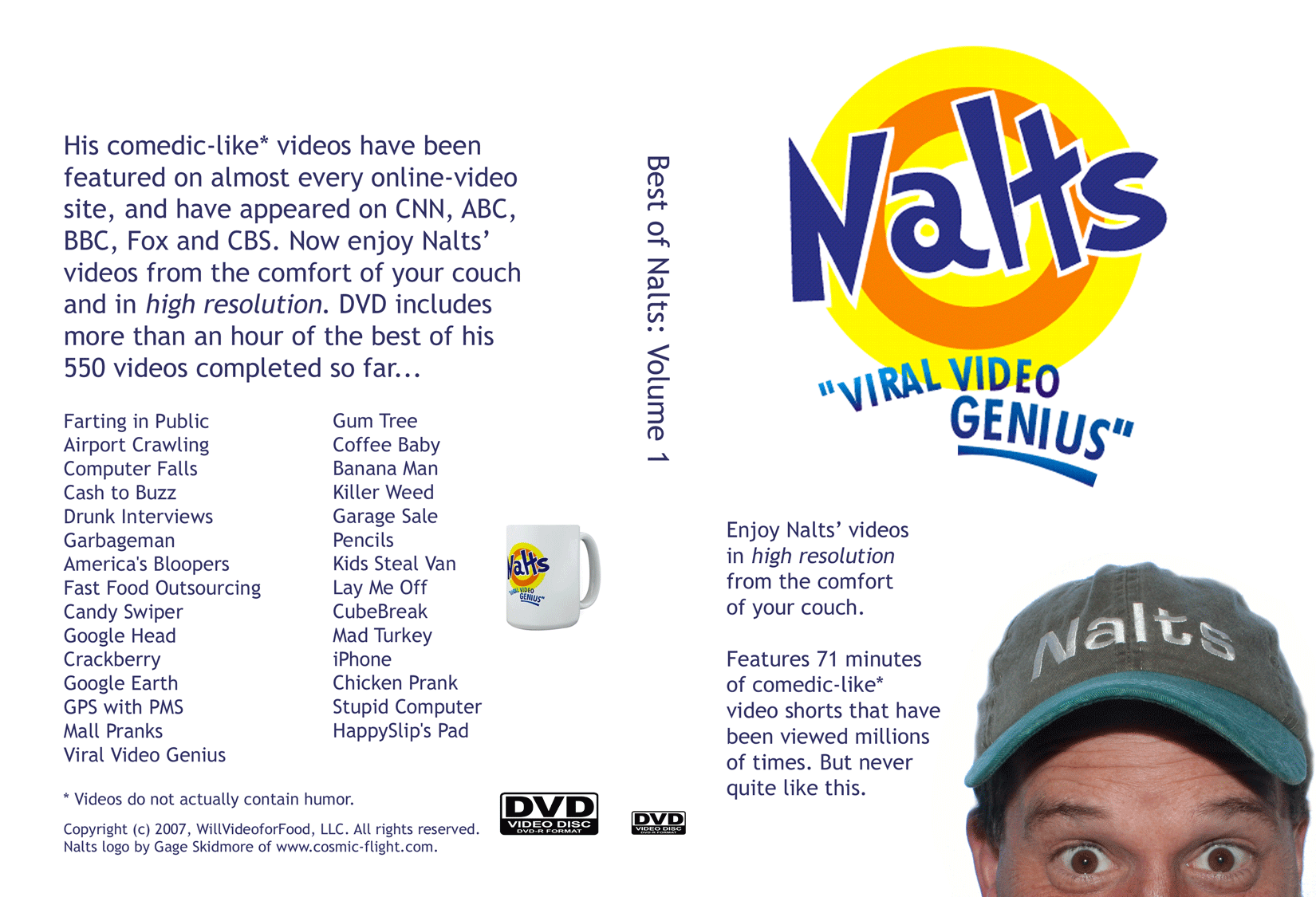 Per my post in December, I finally received and approved my proof of the “Best of Nalts: Volume 1” DVD. So now you can buy 71 minutes of Nalts videos (with 29 videos) on CreateSpace.com by clicking here.
Per my post in December, I finally received and approved my proof of the “Best of Nalts: Volume 1” DVD. So now you can buy 71 minutes of Nalts videos (with 29 videos) on CreateSpace.com by clicking here.
I have nearly “comedic” 600 videos online for free, but I think these are the best ones (although a few of you pointed out a few that need to be high on the list for volume two). I avoided videos that were too YouTube centric like Renetto shaving my head, or other inside jokes. So most of these are family-friendly and don’t require any context to appreciate.
So buy your copy now for the low, low price of $19.94. Yey. My kids and their friends just gathered around to watch the proof DVD tonight, and it’s frightening how clear the quality is since most of them are high definition… especially when you’re used to seeing them in horribly compressed format on YouTube. You can actually read little things in the background, so I’m sure I’ve inadvertently left a credit card number visible. But unless I sell about 30,000 of these DVDs (and something tells me I’m lucky if I sell 50), those credit card numbers won’t be much worth to you.
To see the full list of videos, click “more” below. To see the sleeve in higher resolution, click the image on the right.
Click here to buy one for $19.94. Click here to watch ’em for free in low resolution and with annoying ads. 🙂
P.S. I priced mine exactly one penny below HappySlip‘s, and I make big $6.02 per copy sold.
Continue reading Buy “Best of Nalts” Video Shorts on High Definition DVD
Sales of My Free eBook Skyrocket Due to TechCrunch Coverage
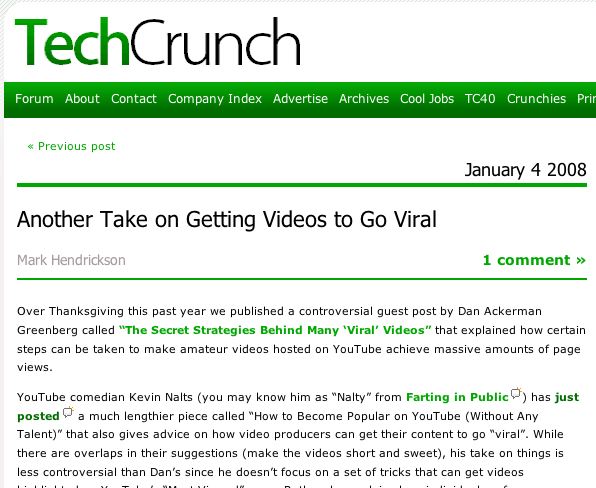 Well, you loyal WillVideoForFood.com readers, please reserve your front row seats, because the auditorium may be filling with some TechCrunch visitors. They actually crunched about my eBook. Here’s my original post about the book, titled “How to Become Popular on YouTube (Without Any Talent).” Here’s my video reaction to the coverage.
Well, you loyal WillVideoForFood.com readers, please reserve your front row seats, because the auditorium may be filling with some TechCrunch visitors. They actually crunched about my eBook. Here’s my original post about the book, titled “How to Become Popular on YouTube (Without Any Talent).” Here’s my video reaction to the coverage.
Or maybe TechCrunch didn’t write about me, and it’s a weird dream. I’m kinda sleep deprived. But if it’s a dream, then so is this post. So at least I’m not at risk of embarrassing myself by claiming something that… never mind.
Sales of my free eBook have tripled almost instantly. Naturally I promised TechCrunch a return link, because you know how desperate they are for inbound links. Mike Arrington’s always e-mailing me with this “can’t pass reciprocal link deal,” and I’m like… “find your own audience, dude.”
So if you have popped by for the standard 8-second “do I care about this site?” determination, take off your shoes, subscribe and stay a while. I’m Nalts. These are the other people reading this blog. They’re a little more quiet than me, but they’re here alright.
We cover online video trends, personalities and websites. We tracks interesting “viral video” case studies. And we reviews how marketers and agencies can leverage this visceral new online-video medium to engage people relevantly and promote their brands. Oh, and we occasionally self promote ourself. But at least we’re transparent, right? We don’t usually use the “royal” we, but we’re sleep deprived, remember?
To subscribe, paste this into your reader:
- https://willvideoforfood.com/feed/
If you want comments too, paste this:
- https://willvideoforfood.com/comments/feed
Or subscribe to WillVideoforFood via one of these readers:
And if you have a YouTube account, you can subscribe to my “Nalts” videos by clicking here.
“How to Become Popular on YouTube (Without Any Talent)” – A Free eBook
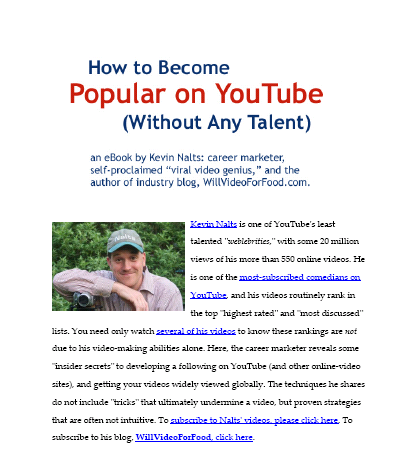 Thank you, dear readers, for your help finalizing this version 1.5 of “How to Become Popular on YouTube Without Any Talent.” Honestly, if I look at this document another moment I’m going to boot. If you’re looking for my real book, “Beyond Viral,” published by Wiley & Sons in 2010, please click here.
Thank you, dear readers, for your help finalizing this version 1.5 of “How to Become Popular on YouTube Without Any Talent.” Honestly, if I look at this document another moment I’m going to boot. If you’re looking for my real book, “Beyond Viral,” published by Wiley & Sons in 2010, please click here.
(Warning- clicking the image to the right will cause you to download the book, which is annoying but probably what most people expect).
This post marks the official release of the book. You can download it (for free) by clicking this link, which will open the 30-page PDF: “How to Become Popular on YouTube (Without Any Talent), version 1.5” by Kevin Nalts, WillVideoForFood.com. If you post the PDF on your own blog or website, please keep that title, and my name and URL. You might want to list this post’s permalink, since it will point to future downloadable versions.
While you’re waiting for Adobe to open (insert “car rusting” joke here), I hope you’ll RSS this blog so we can keep each other current. If you’re a YouTuber and haven’t subscribed to my videos, visit YouTube.com/Nalts, then select the orange button labled “subscribe.” Okay- enough self promotion for one day. I’m going to take a nap.
Here’s the book on Skribd for easy access.
Here’s a free 2-page synopsis of my book, “The Prophet of Online Video.” If you want to use this outline and write your own book, go ahead. I’m so not writing for a while.

